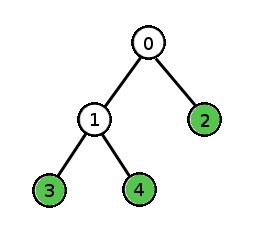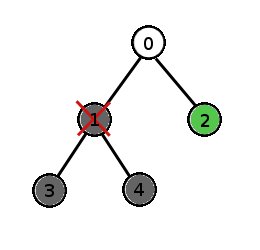Problem Statement
Let's assign a unique number to each cell in an organism's development process. For example, consider a species in which each organism starts with cell 0, which divides into cells 1 and 2. Cell 1 divides into cells 3 and 4. Cells 2, 3 and 4 do not divide. Every mature organism of this species will consist of exactly 3 cells - 2, 3 and 4.

During the development process, if we kill a cell, it will be absent in the mature form of the organism. If that cell happens to be a cell that divides, then the mature organism will be missing all of the cell's descendants as well because the cell is killed before it has a chance to divide. For example, in the organism described above, if we kill cell 1 during the development process, the mature organism will contain only cell 2.

You are given a int[] parentCell describing the development process of an organism. The i-th element of parentCell is the parent cell of cell i (where i is a 0-based index). The zygote's parent is -1. Return the number of cells the mature form of this organism would have if you killed cell deletedCell during the development process.
Definition
| Class: | CellRemoval |
| Method: | cellsLeft |
| Parameters: | int[], int |
| Returns: | int |
| Method signature: | int cellsLeft(int[] parent, int deletedCell) |
| (be sure your method is public) | |
Constraints
Examples
| ||
Returns: 2 | ||
| ||
| ||
Returns: 1 | ||
| ||
| ||
Returns: 0 | ||
| ||
| ||
Returns: 2 | ||
| ||
Returns: 14 | ||